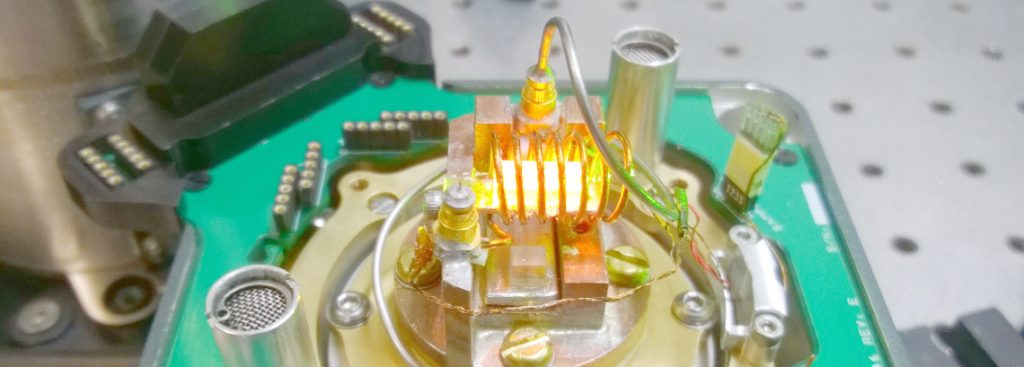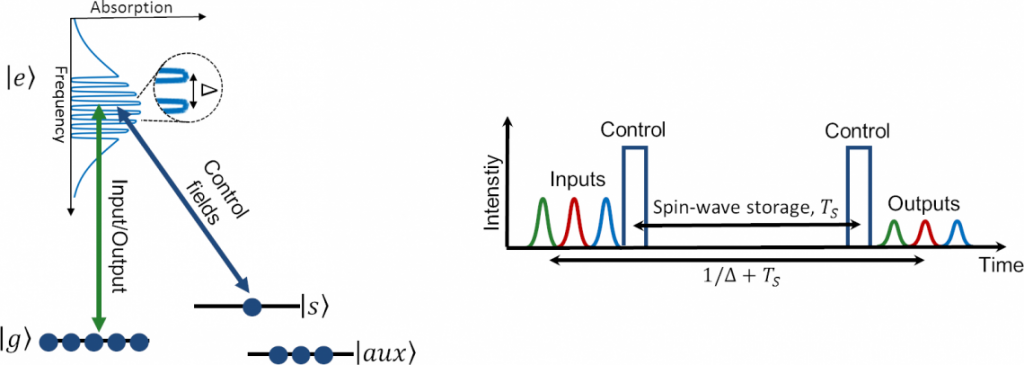Researchers from the University of Geneva (UNIGE) broke a new record by storing a qubit in a crystal for 20 milliseconds, a press statement reveals.
The new record in quantum storage could help to develop long-distance ultra-secure quantum telecommunications networks.
Quantum physics has enabled a whole host of innovations, including computers, smartphones, and GPS. The field is also showing great potential by opening new avenues of research for quantum computing and cryptography, with the latter potentially allowing coded messages to be sent over quantum communication networks.
One obstacle stands in the way. After traveling a few hundred kilometers within an optical fiber cable, the photons that carry the qubits (quantum bits) storing the information disappear, ceasing the communication.
The researchers from UNIGE set out to build “repeaters,” a type of “relay” partially based on quantum memory. Their research is published in the journal npj Quantum Information.
Superposition — referred to by Albert Einstein as “spooky action at a distance” — would allow for ultra-secure communication as it would alert a sender as soon as their message has been intercepted, and it could not be copied without breaking the entanglement that allows the message to send in the first place.
In 2015, a team from UNIGE led by Mikael Afzelius, senior lecturer in the Department of Applied Physics, successfully stored a qubit carried by a photon for 0.5 milliseconds in a crystal. The photon transferred its quantum state to the atoms of the crystal before it disappeared. However, the results showed that the phenomenon did not last long enough to build the larger network of crystals required to build a vast communications network.
“A world record for quantum memory”
The new 20-millisecond milestone, however, could be just the breakthrough Afzelius’ team was looking for. “This is a world record for a quantum memory based on a solid-state system, in this case a crystal. We have even managed to reach the 100 millisecond mark with a small loss of fidelity,” Azfelius said.
For their experiments, the researchers kept their crystals at temperatures of -273,15°C so as not to disturb the effect of entanglement.
“We applied a small magnetic field of one thousandth of a Tesla to the crystal and used dynamic decoupling methods, which consist in sending intense radio frequencies to the crystal,” said Antonio Ortu, a post-doctoral fellow in the Department of Applied Physics at UNIGE.
“The effect of these techniques is to decouple the rare-earth ions from perturbations of the environment and increase the storage performance we have known until now by almost a factor of 40,” he added.
The result of this experiment could allow for the development of long-distance quantum telecommunications networks, though the researchers would still have to extend the storage time further. In their paper, the researchers said “the aim is to develop a system that performs well on all these points and that can be marketed within ten years.”
Quantum Memories
Quantum memories are devices that can store the quantum state of a photon, without destroying the volatile quantum information carried by the photon. The quantum memory should be able to release a photon with the same quantum state as the stored photon, after a duration set by the user.

Quantum memories require coherent matter systems, otherwise the quantum information stored inside the medium will be lost due to decoherence. It is also our belief the any practical device should be based on solid-state materials. Rare-earth-ion (RE) doped crystals are highly intersting matter systems for quantum memories, owing to their unique optical and spin coherence properties at low temperaturs (around 4 K).

To cool down the RE crystals we use closed-cycle coolers that do not require any cooling liquids.

Quantum memories will be key components in future quantum networks, such as quantum repeaters which can provide a solution for long-distance quantum communication beyond the limit of 500 km using today’s technology.
To store photons in RE-doped crystals we use the Atomic Frequency Comb technique, which we first proposed and demonstrated experimentally in our lab in 2008: see PRA article (proposal) and Nature article (experiment).

The AFC technique can store quantum information in highly time-multiplexed fashion, which is key to buidling quantum repeaters for future quantum networks.
In addition to future applications, quantum memories are fascinating because they provide a way to study how quantum effects such as entanglement can be transferred between physical systems of widely different nature, eg. between light and matter systems.
